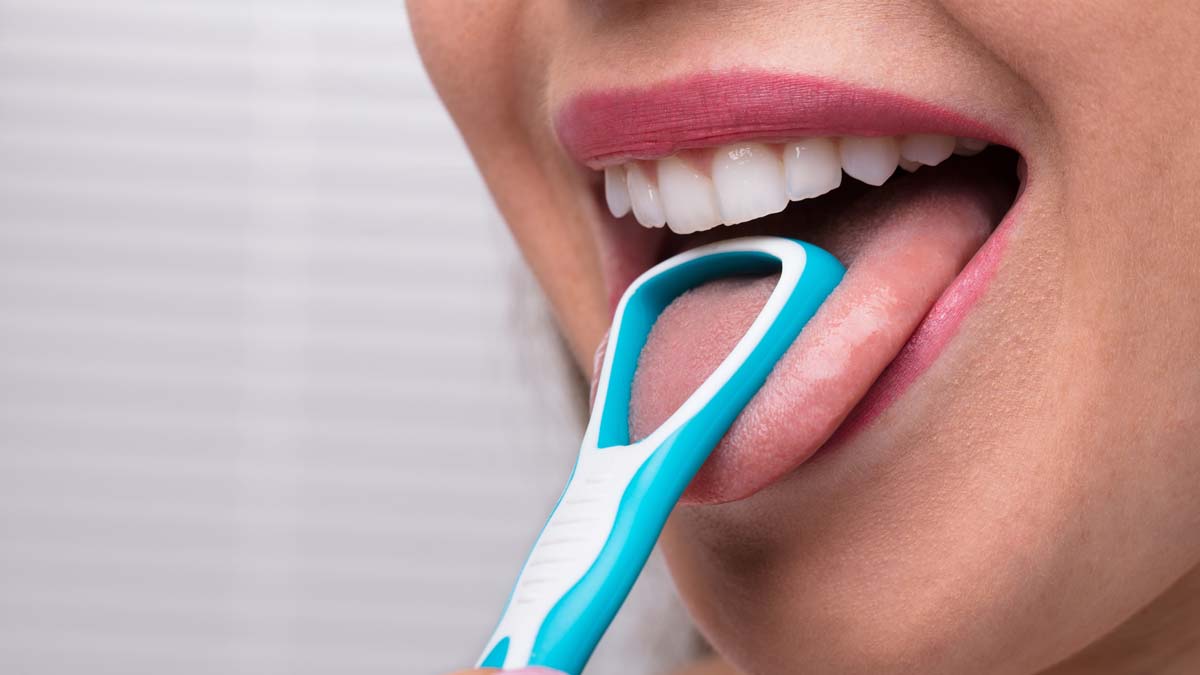If you’ve spent a significant amount of time on TikTok and you are a reader of publications such as HealthLinks, it’s likely that you’ve come face-to-screen with the online health and wellness community. Self-proclaimed experts on the app show viewers the way to do everything from washing fresh produce – and showing us there might be bugs you can’t see – to building a six-step hair oiling routine.
One trend among trends has been at the tip of our tongues for quite some time: tongue scraping. Although mostly unknown in Western civilization until recently, “it has been practiced for thousands of years,” said Dr. Nicole Dahlkemper, DMD, LVIF, of Waters Edge Family Dentistry. Scraping or brushing of the tongue has been practiced for centuries in Europe, Africa, India and South America.
Over the years, the scraping tool has been made of wood, mother-of-pearl, whalebone and beyond.
“Current tongue scrapers are metal or plastic devices that are used to clean your tongue, which can harbor up to 200 different kinds of bacteria which can sit on the tongue and cause bad breath,” said Dr. Nicole Dahlkemper.
The mouth is a bustling place for bacterial growth, where dead cells accumulate on the cheeks and especially on the tongue, mixing with blood debris and nutrients, often causing an unpleasant odor.
Evidence has demonstrated that after a week without cleaning the tongue, plaque-forming streptococcal counts can increase tenfold. It has been reported that regular tongue brushing reduces the formation of dental plaque, suggesting that brushing your teeth but not your tongue contributes to unwanted dental issues.
All to say, “cleaning your tongue is important,” said Dr. Dahlkemper. “Every time you brush your teeth.”
Just as important is to do it right. Excessive or aggressive tongue cleaning may affect the quantity and proficiency of your taste buds.
“You only want to use light pressure because if you use too much pressure you can hurt yourself. Lightly scrape the tongue from back to front three to four times after you brush and floss,” instructed Dr. Dahlkemper.
Proper brushing methods – using a light touch and focusing on the central region of the tongue, are suggested by a research paper that investigated how tongue brushing and the perception of taste are related.
Another trend among holistic care gurus is gua sha. With records dating all the way back to the Ming Dynasty – 1368 to 1644 – the therapy has been widely used in traditional Chinese medicine, according to Yin Yin for China Daily.
Gua sha, meaning to “scrape away illness,” involves the use of a tool – today often made of jade, rose quartz or other stones – to repeatedly scrape and rub areas of the body to increase blood circulation. The ancient therapeutic technique has been used for centuries to treat ailments such as fevers and body aches.
On TikTok, the primary benefits reported are for gua sha massages of the face – for tension relief and reduced puffiness and inflammation. Users also report success in reducing the incidence of headaches and migraines. When using gua sha on the face, the scraping and rubbing should be gentler and done with less pressure than would be applied on other areas of the body.
Gua sha is traditionally done along with acupuncture and other modalities of traditional Chinese medicine, so perhaps those will be trending next as the TikTok community continues to discover and share its health and wellness journeys.
By Molly Sherman
